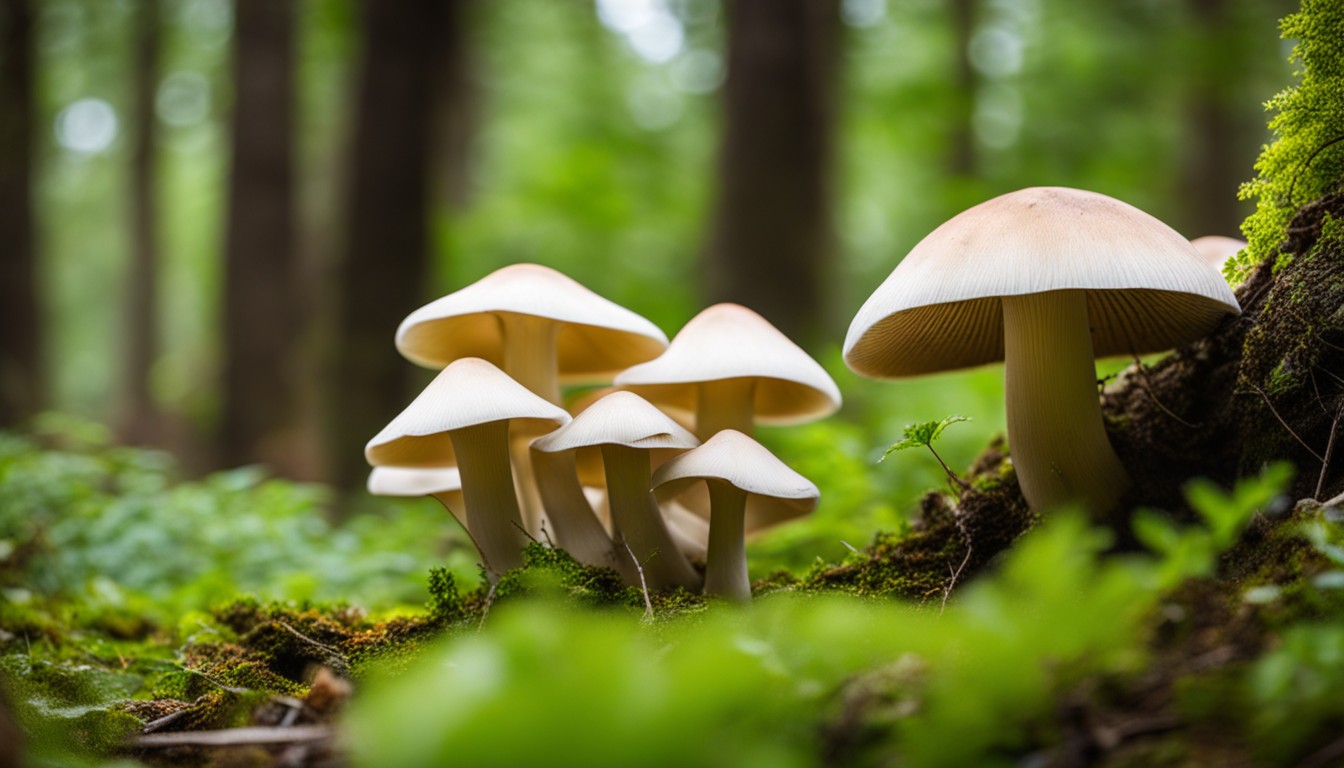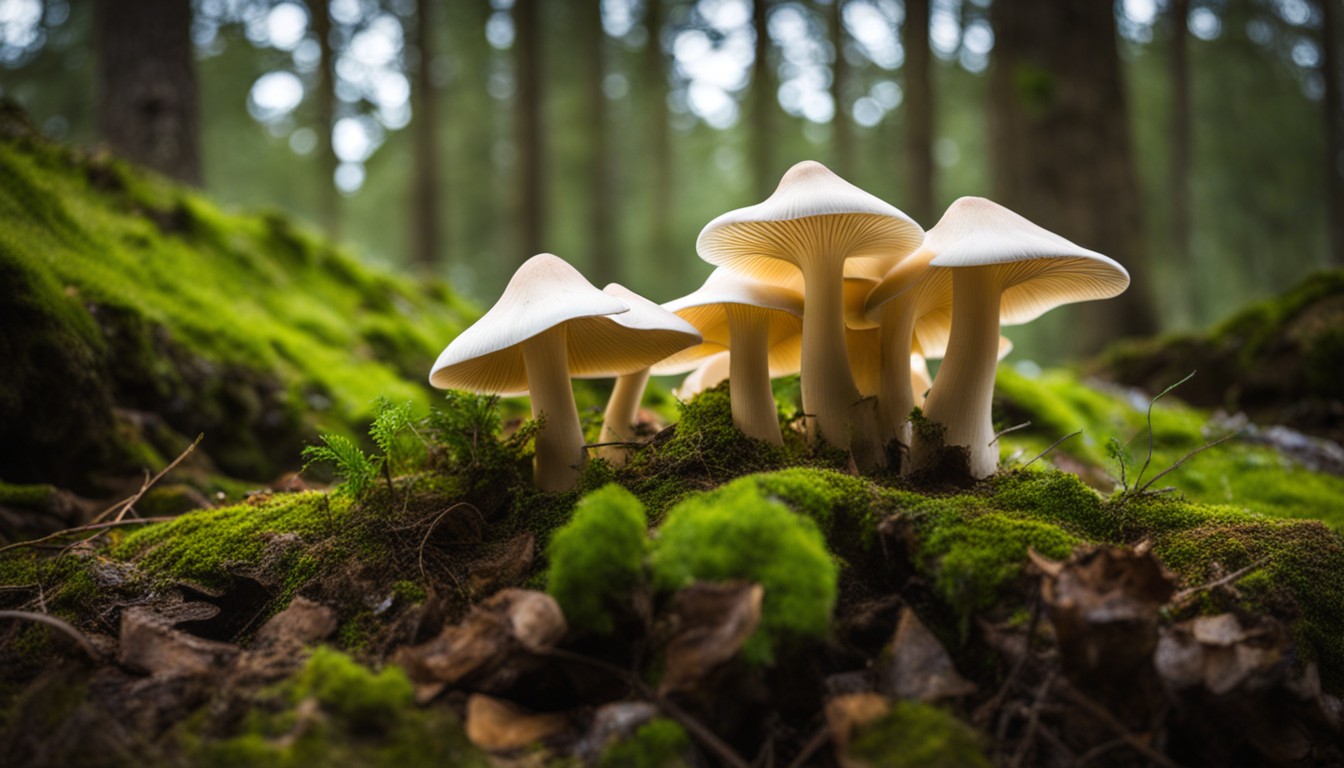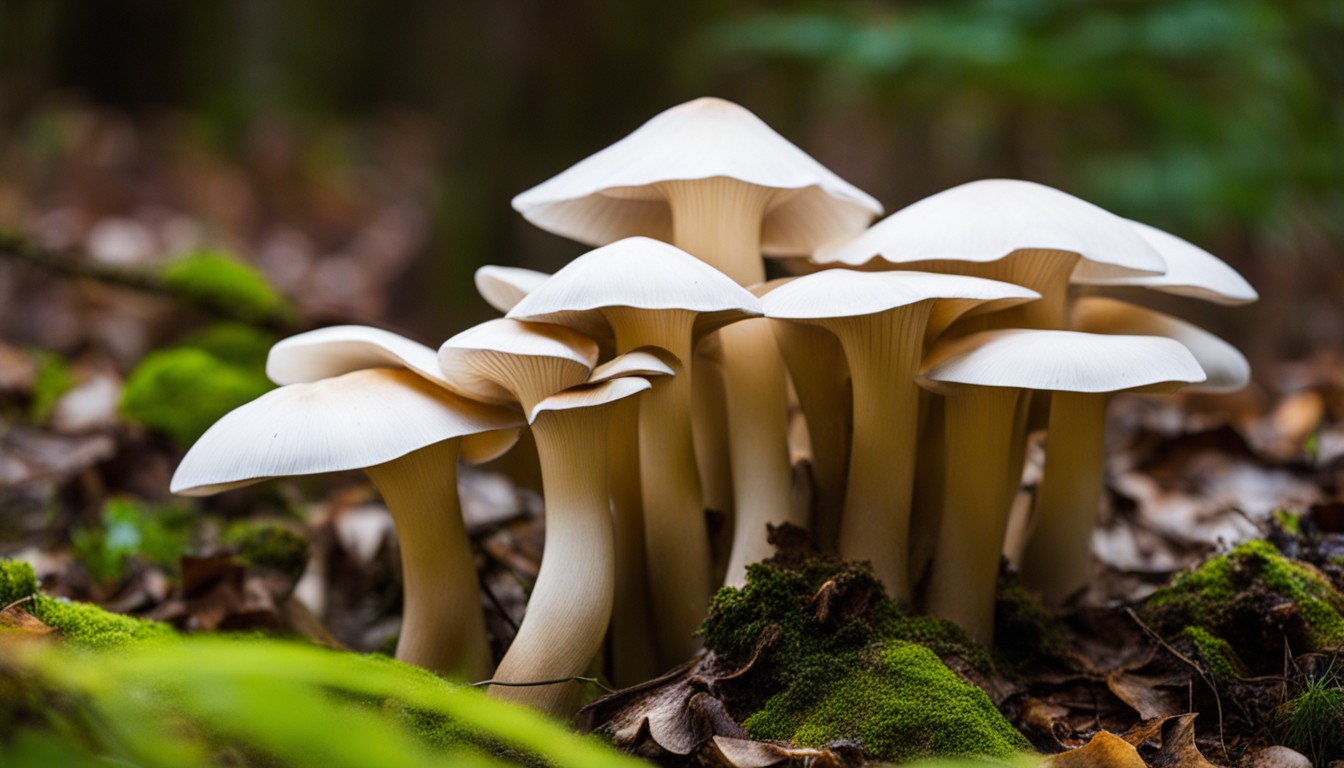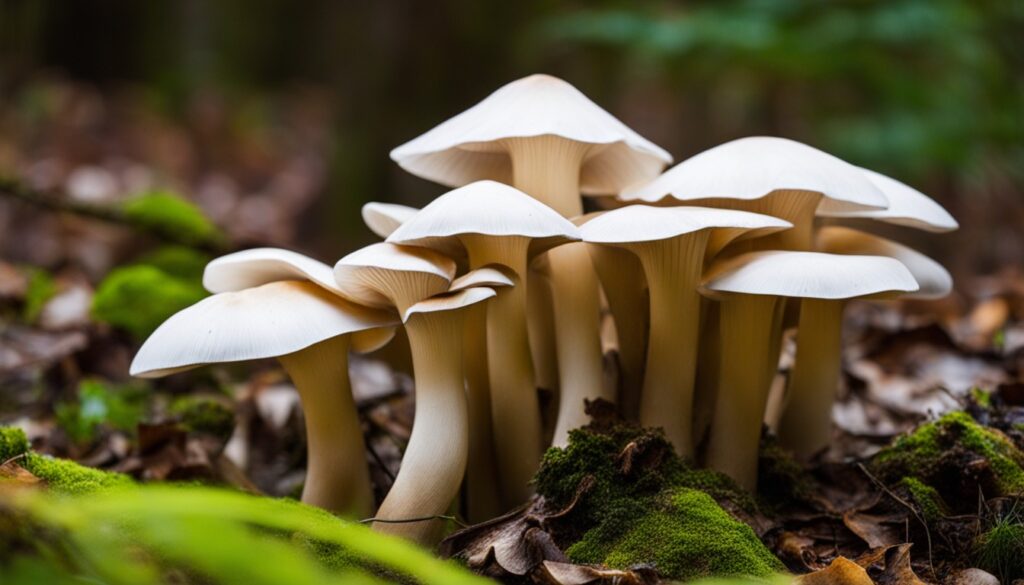Mushroom infestation in new sod can be a common issue faced by homeowners. Understanding the causes of mushroom growth and implementing effective solutions is crucial for maintaining a healthy and attractive lawn. This blog post will explore the reasons behind the proliferation of mushrooms in new sod and provide practical tips to prevent and eliminate them. Whether you’re a seasoned gardener or a beginner, this comprehensive guide will equip you with the knowledge and tools to tackle mushroom infestation head-on.
Causes of Mushroom Infestation on New Sod
Mushroom infestation on new sod often results from several factors working in tandem – high humidity, excessive shade, poor drainage, soil fungal spores, and the decomposition of organic material. Understanding these dynamics is key to preventing future invasions.
Each cause of mushroom infestation plays a critical role in the overall incidence of infestation. A comprehensive analysis of these factors enables homeowners to create an environment less conducive to mushroom growth on new sod.
High Humidity Levels
High humidity levels play a vital role in the growth of mushrooms on new sod. As fungi, mushrooms thrive in moist environments where humidity is high, causing a mushroom infestation on your sod.
- Humidity provides the wet environment mushrooms need to grow
- Overly moist conditions increase the likelihood of a mushroom infestation
- High humidity can accelerate mushroom growth and spread on new sod.
Excessive Shade
Excessive shade can contribute to mushroom infestation in new sod. Under shaded conditions, the environment becomes cooler and more humid, promoting fungal growth.
- Increased humidity caused by shade encourages fungal spores.
- Cooler temperatures in shaded areas create a suitable environment for mushrooms.
- Lack of sunlight in shaded areas can slow down the decomposition of organic materials, providing a food source for mushrooms.
Poor Drainage
Poor drainage creates swampy conditions, ideal for mushroom growth. When new sod retains excessive water, it fosters mushroom infestation, hindering healthy grass development.
- • Allows water to stagnate, promoting fungal growth
- • Prevents roots from receiving necessary oxygen
- • Creates a favorable environment for soil fungi spores proliferation
Organic Material Decomposition
High levels of decomposing organic matter in the soil can lead to an overgrowth of mushrooms on your new sod. These materials can provide an ideal environment for mushroom spores to grow and multiply.
- Decomposed lawn clips or leaves
- Roots of old trees or shrubs
- Uncomposted manure
- Previous mushroom compost
- Decayed wood
Soil Fungal Spores
In the ecosystem of your new sod, soil fungal spores play a critical role in mushroom’s proliferation. Upon finding favorable conditions, these dormant spores activate, leading to an infestation.
- The potential for mushroom growth is intrinsic in sod due to the presence of fungal spores.
- Soil fungal spores may stay dormant before discovering favorable conditions in your lawn.
- In high moisture conditions coupled with inadequate sunlight and drainage, these spores can activate.
- To control mushroom infestation, managing soil fungal spore distribution is essential.
Signs of Mushroom Infestation

The key indicators of mushroom infestation in your newly sodded lawn are unmistakable – primarily, you’ll notice visible mushrooms cropping up amidst the green. Beyond this visual confirmation, other signs include a sudden, foul odor, often akin to that of rotting material, permeating your outdoor space.
An early detection of mushroom infestation in sod involves observance for uneven, damp patches and discoloration, importantly, before visible mushrooms appear.
An in-depth observation of your new sod can help detect the early signs of a mushroom infestation. If the sod appears uneven or disturbed, with patches of dampness or discoloration, these could be clear signals of a burgeoning mushroom problem that calls for immediate attention.
Visible Mushrooms
Recognizing visible mushrooms on your sod is crucial. As primary indicators of infestation, they clearly hint at an underlying issue with your lawn’s health. Awareness is the first step toward effective intervention.
Just one mushroom on the green expanse of your new sod can be a symptom of a greater problem. It’s a sign your lawn could be host to an undesired mushroom infestation. Don’t underestimate this sign.
If you’re seeing mushrooms cropping up on the new sod, take it seriously. Those toadstools are more than merely an eyesore. They reveal a larger, possibly deleterious, fungal problem.
A cluster of mushrooms dotting your new sod might be more than a simple cosmetic issue. It’s a loud and clear bell echoing a potential fungal infestation, crying out for your attention.
Although a single mushroom on your new sod could be innocuous, a group of them is a red flag. A mushroom invasion in your lawn significantly impairs its aesthetics and can cause extensive damage. Act swiftly.
Foul Odor
Mushrooms, notably those belonging to the Agaricus species, often emit a foul smell which can serve as a symptom of infestation. This particular odor is a result of organic material breaking down, thus providing a perfect environment for the establishment and growth of mushrooms.
Unfortunately, most times, the unpleasant smell is misunderstood as a sign of poor soil fertility or a potential disease. That’s why it’s essential to recognize that this odorous presence might be a clear indication of mushroom infestation on your new sod.
When you detect a strong, unpleasant smell from your new sod, it could suggest a severe mushroom infestation. While not always the case, such an odor could indicate the decomposition of organic substances in the soil, subsequently leading to fungal development.
Understanding the correlation between foul odors and mushroom infestation can direct homeowners to implement preemptive measures. In doing so, they can limit the likelihood of a full-blown mushroom invasion and protect their newly installed sod’s health and aesthetic appeal.
Preventing Mushroom Infestation

Strategies for preventing mushroom infestation on new sod include amending drainage to reduce soil saturation, employing tree-trimming practices to minimize excessive shade, and curtailing the accumulation of organic materials such as leaves and grass clippings that serve as rich compost for fungi.
Setting up the first line of defense against mushroom infestation begins in the watering practices. Watering the lawn correctly, usually in the early morning to reduce evaporation and to allow the sod to dry during the day, can significantly lower the chances for mushroom growth. Providing the correct care to your new sod will discourage fungal spore development.
Improve Drainage
Start with soil inspection to ensure optimal drainage. Evaluate whether water seeps in and drains out effectively. A well-drained soil serves as a barrier against mushroom growth, as fungi thrive in waterlogged areas.
If the soil fails to drain properly, factors such as soil composition could be the root cause. Most often, clayey soil hinders drainage and could make your new sod a perfect breeding ground for mushrooms.
To overcome this, consider modifying your soil type. Introduce organic matter or compost into the clayey soil. Such materials boost water absorption, drainage, and prevent waterlogging, thereby deterring mushroom development.
The incorporation of sand can also provide a sustainable solution. It improves the texture of the soil, allowing better permeability for water, diminishing the chances of a mushroom infestation.
Moreover, you can invest in installing effective lawn drainage systems. A French drain or a properly graded lawn ensures excess water is redirected, effectively keeping mushroom growth at bay.
Reduce Shade
Reducing shade over new sod is a potent strategy to halt mushroom growth. This reduction affords sod an unobstructed access to sunlight, which curbs the development of fungi conducive to mushroom proliferation.
Mushrooms flourish in shaded, damp environments. Establishing an environment abundant in sunlight significantly hinders their growth. By letting your new sod bask in the sun, you alter conditions unsuitable for mushroom survival, thus reducing infestation.
The interplay between sunlight and mushroom infestation should not be understated. Sunlight promotes faster evaporation, which in turn decreases the soil’s moisture content – an essential factor that mushrooms need for growth. Therefore, maximum sun exposure should be facilitated wherever possible for new sod.
Limit Organic Material Accumulation
The build-up of organic materials like leaves, twigs, or decaying plant matter encourages the growth of mushrooms. Minimizing their accumulation on the new sod effectively deters mushroom infestation.
Excess organic debris retains moisture longer, creating an ideal environment for fungus spores to germinate and grow into mushrooms.
Regularly raking the lawn can help prevent mushroom infestation by reducing excess patches of decomposing organic matter thus, stifling the nutrition mushroom spores require to thrive.
Understanding and acting upon this link between organic debris and fungal growth could be crucial in maintaining the health and aesthetic appeal of your new sod.
Water Lawn Correctly
Proper watering techniques can play a crucial role in preventing mushroom infestations. Overwatering creates an ideal environment for fungi to thrive, encouraging mushroom growth. It’s essential to maintain a balance, providing just enough moisture to support healthy grass growth without fostering fungal blooms.
Irrigation best practices advise against watering your lawn at night. This common mistake can lead to excess moisture, a prerequisite for mushroom infestation. Instead, water your lawn in the early morning, allowing excess water to evaporate under the sun.
Another useful irrigation tip is using a timer. This not only ensures you’re consistently watering your lawn, but also prevents over-irrigation, which can contribute to mushroom infestation. Careful scheduling avoids water pooling and reduces fungal growth opportunities.
On the same note, it’s also advisable to infrequently but deeply water your lawn. This irrigation technique encourages roots to grow deeper, strengthening the sod while keeping the topsoil relatively dry and discouraging mushroom growth.
Treating Mushroom Infestation

In treating mushroom infestation naturally, manual removal is effective yet labor-intensive. This method involves physically extracting the fungi and then adjusting irrigation practices to limit damp, fungi-friendly conditions.
When confronting persistent infestation, fungicide application might be needed. This treatment can effectively target and eliminate the fungal spores in your sod. However, for best results and to mitigate any risks, solicit the expertise of professional lawn care services.
Manual Removal
Manual hand-picking mushrooms is an effective yet labor-intensive way to address mushroom infestation. Regular checks and timely removal can stop spores from spreading, keeping new sod free from infestation.
Safe handling is paramount when dealing with mushrooms. It’s recommended to wear gloves and bag them immediately after removal to prevent spores from scattering, potentially causing more infestation.
Choosing organic techniques for combatting mushroom infestation not only safeguards the environment but also helps maintain the health of the new sod. Hand-picking falls into this category, alongside other non-chemical methods.
To maximize the effectiveness of manual removal, combine it with corrective care actions. Enhancing sod health through adequate watering, proper mowing, and appropriate fertilization schedule can increase the lawn’s resistance to fungal infestation.
Fungicide Application
Commercial fungicides play a crucial role in new sod mushroom infestation prevention. These specialized products eradicate soil fungal spores, thus attacking the problem at its root.
Strategic application of fungicides is crucial to successfully eliminating mushroom infestation on new sod. Precise schedules and proper distribution patterns can help wipe out the fungal problem, restoring the health of your lawn.
Adjust Irrigation Practices
Adopting adaptive irrigation practices can significantly mitigate mushroom infestation on new sod. By adjusting watering schedules based on weather conditions and soil moisture, this proactive approach curbs the proliferation of mushrooms, which thrive in overly damp environments.
Effective confrontation of mushroom infestation necessitates a proper watering regimen. Aim to water your lawn deeply, but infrequently, to encourage deep root growth while discouraging mushroom formation. Monitor rainfall events to avoid excessive watering.
Professional Lawn Care Services
Lawn care professionals possess the knowledge and tools necessary to handle mushroom infestations effectively. They assist in not only eradicating existing mushrooms but also in preventing future invasions.
Through careful assessment of the lawn condition, professionals can determine the primary cause of the problem. Be it poor drainage, over-shading, or imperfect irrigation practices, they know how to address it.
When it comes to applying fungicides, experts do it efficiently with precision. They can strategically distribute the product to ensure negligible harm to the soil and surrounding plants.
Contracting professional lawn care services allows homeowners to stay stress-free. Expert care ensures that the new sod retains its health and beauty while eliminating unwanted mushroom growth.
Professional lawn services offer tailored solutions. They consider the specific needs of your lawn, the local climate, and the type of sod, ensuring a customized care plan for optimal lawn health.
Frequently Asked Questions (FAQ)
What causes mushrooms to grow in new sod?
Mushrooms in new sod can be caused by factors such as excessive moisture, organic matter decomposition, and spores present in the soil.
How can I identify mushroom infestation in my new sod?
Signs of mushroom infestation include the sudden appearance of mushrooms or toadstools on the surface of the sod, often accompanied by a musty odor.
How can I prevent mushrooms from growing in my new sod?
Preventive measures include ensuring proper drainage, reducing excessive moisture, avoiding overwatering, and minimizing organic matter buildup.
What are effective treatments for eliminating mushrooms in new sod?
Treatments include manually removing mushrooms, improving soil drainage, reducing shade, and using fungicides as a last resort.
Can I consume mushrooms growing in my new sod?
It is strongly advised not to consume mushrooms from your new sod, as they can be toxic and pose health risks.
Should I be concerned about mushrooms in my new sod?
While mushrooms in new sod are generally not harmful to the grass, they can detract from the visual appeal of your lawn and may indicate underlying issues with moisture or organic matter.
How long does it take for mushrooms to disappear from new sod?
Mushrooms usually disappear on their own within a few days or weeks as environmental conditions change. Proper lawn care practices can help expedite their disappearance.
Can I prevent future mushroom growth in my new sod?
Regular lawn maintenance, such as proper watering, mowing, and fertilization, along with implementing preventive measures, can help minimize the chances of mushroom growth in your new sod.
Conclusion
In sum, persisting mushroom infestation on new sod can result from high humidity, excessive shade, poor drainage, organic material decomposition, and soil fungal spores. To manage it, promptly employ strategies such as improving drainage, reducing shade, limiting organic material accumulation, correct watering, undertaking manual removal, fungicide application, adjusting irrigation practices, or seeking professional lawn care services.
- High humidity levels
- Excessive shade
- Poor drainage
- Organic material decomposition
- Soil fungal spores
- Improve drainage
- Reduce shade
- Limit organic material accumulation
- Water lawn correctly
- Manual removal
- Fungicide application
- Adjust irrigation practices
- Professional lawn care services

